Gurney Halleck playing a nine-stringed guitar in his first scene in Dune: Part Two is a nod to his character from Frank Herbert's original book.
1. First, in Dune: Part Two, Chani can be seen using a piece of blue fabric as a headband, notably in the scene when Paul rides the sandworm for the first time. In the book, The Art and Soul of Dune: Part Two, director and writer Denis Villeneuve explained that "when Fremen women fall in love, they wear blue in the film."
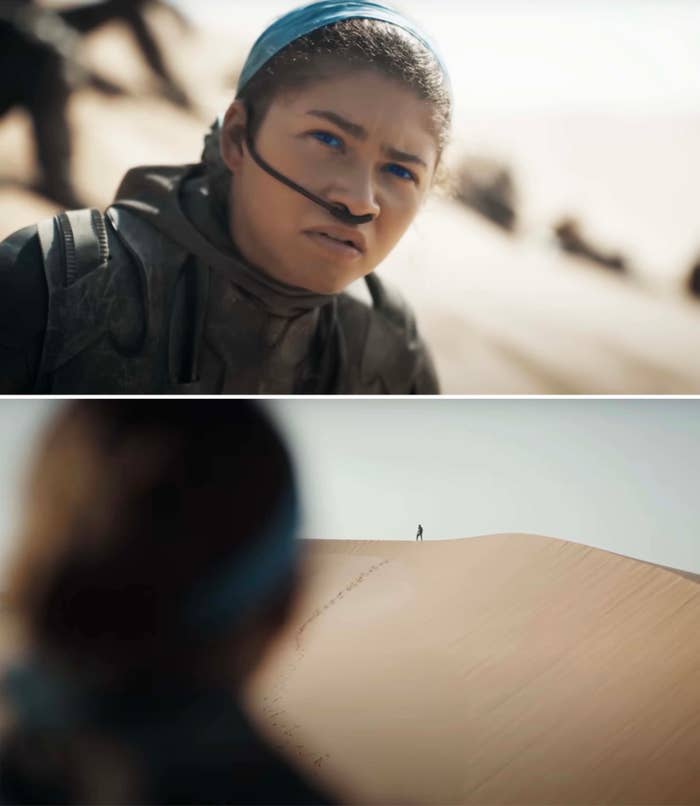
Warner Bros / Via youtu.be
The colored fabric provides a great contrast to the "monochromatic world" of Arrakis.
2. In Dune, when Paul meets Reverend Mother Mohiam she uses the voice on him to declare that he should be silent when he has his hand in the box. In Dune: Part Two, there's a great parallel where Paul now does this exact same thing to her before he fights Feyd-Rautha.

3. Dune: Part Two is the first time we see Giedi Prime, aka the home of the Harkonnens, in the daytime, after only seeing it at night in the first movie. The black sun is the reason the sequence when Feyd-Rautha fights the Atreides prisoners is filmed in black and white.
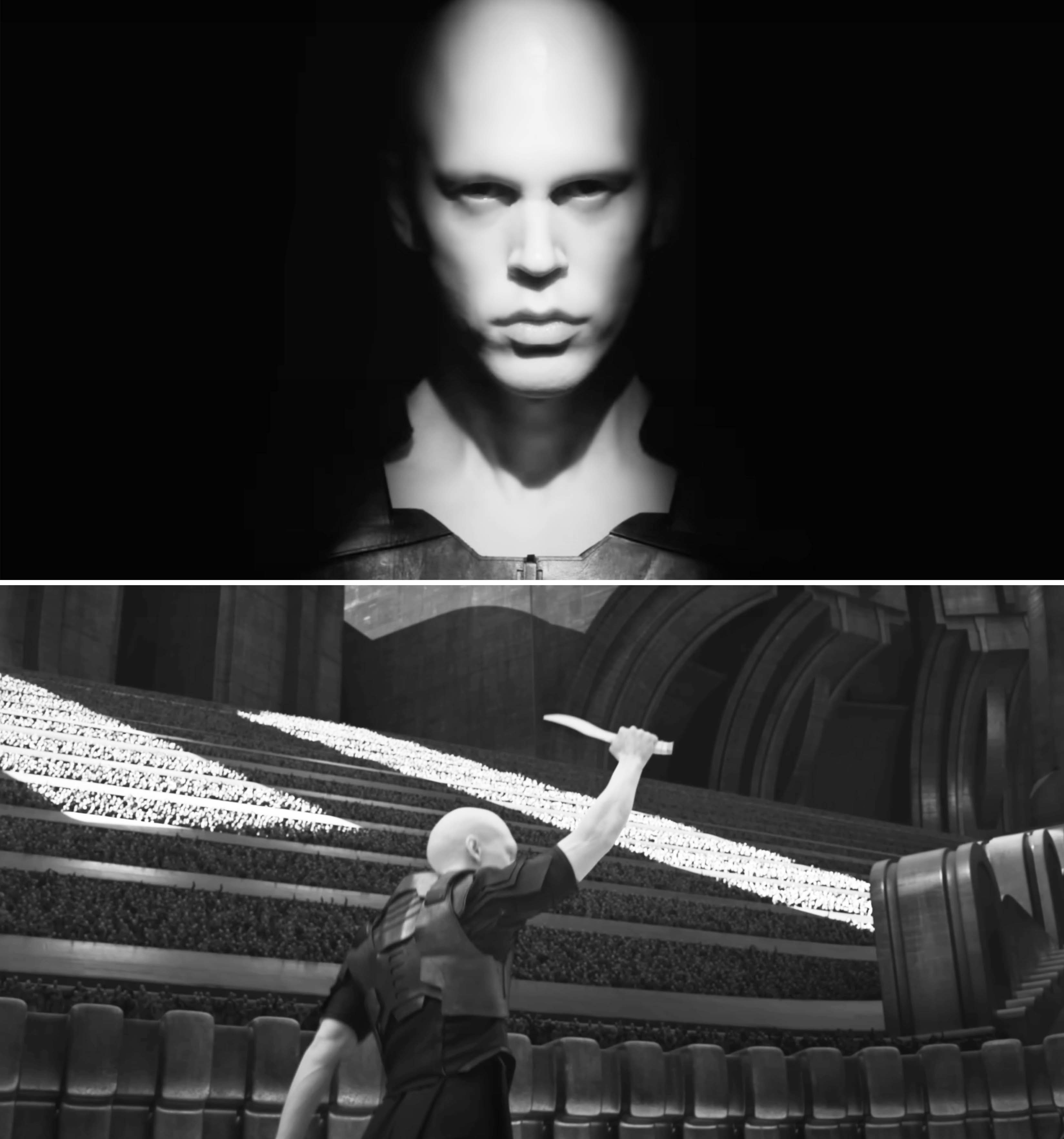
Warner Bros / Via youtu.be
In the book, The Art and Soul of Dune: Part Two, Denis explained that having "sunlight kill color" illustrated how "nothing can flourish on this planet, not even color."
4. The fireworks seen during Feyd-Rautha's birthday celebration on Giedi Prime were inspired by "drops of ink falling into clear alcohol."
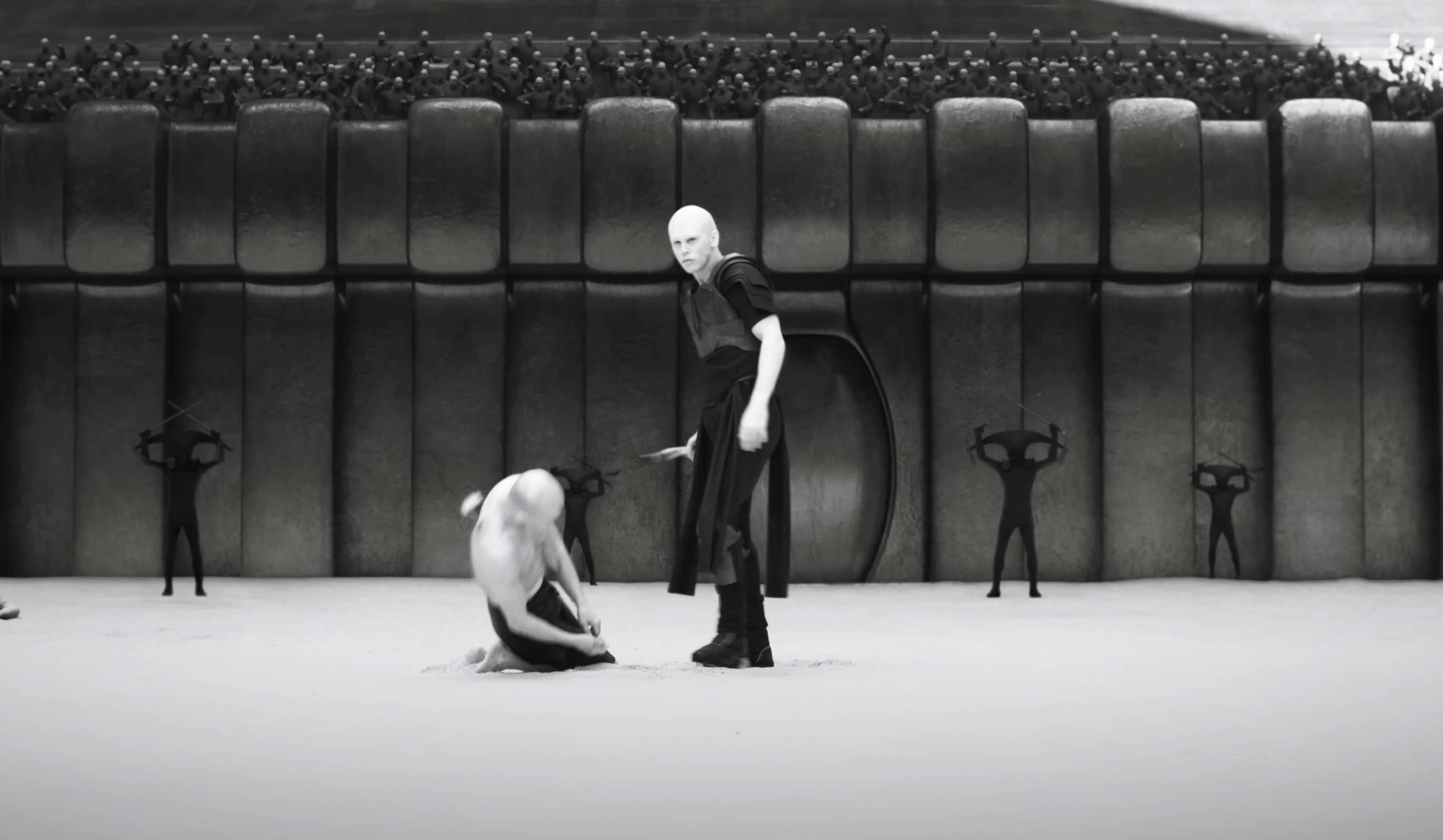
Warner Bros / Via youtube.com
In the book, The Art and Soul of Dune: Part Two, producer Tanya Lapointe explained that this was one of the most "challenging elements" of the film to get right, with Denis wanting them to look like "negative fireworks."
5. When Lady Jessica moves to the South, there's a clear shift in the color scheme for her clothes and what the Reverend Mothers wear in the South vs. the Bene Gesserits. You'll notice Jessica and the Mothers in the South wear earth tones, namely faded oranges, browns, etc., while the Bene Gesserits wear black.
Warner Bros / Everett Collection, Warner Bros / Via youtu.be
In the book, The Art and Soul of Dune: Part Two, costume designer Jacqueline West explained, "With Jessica's move to the south, our whole palette changes." She added, "It's much warmer, and much more ornate."
6. In Dune, there's a shot that shows Paul fighting in a vision and his helmet opening to reveal his now blue-colored eyes. The sequence is recreated in Dune: Part Two when we see Chani fighting in the battle at the end.
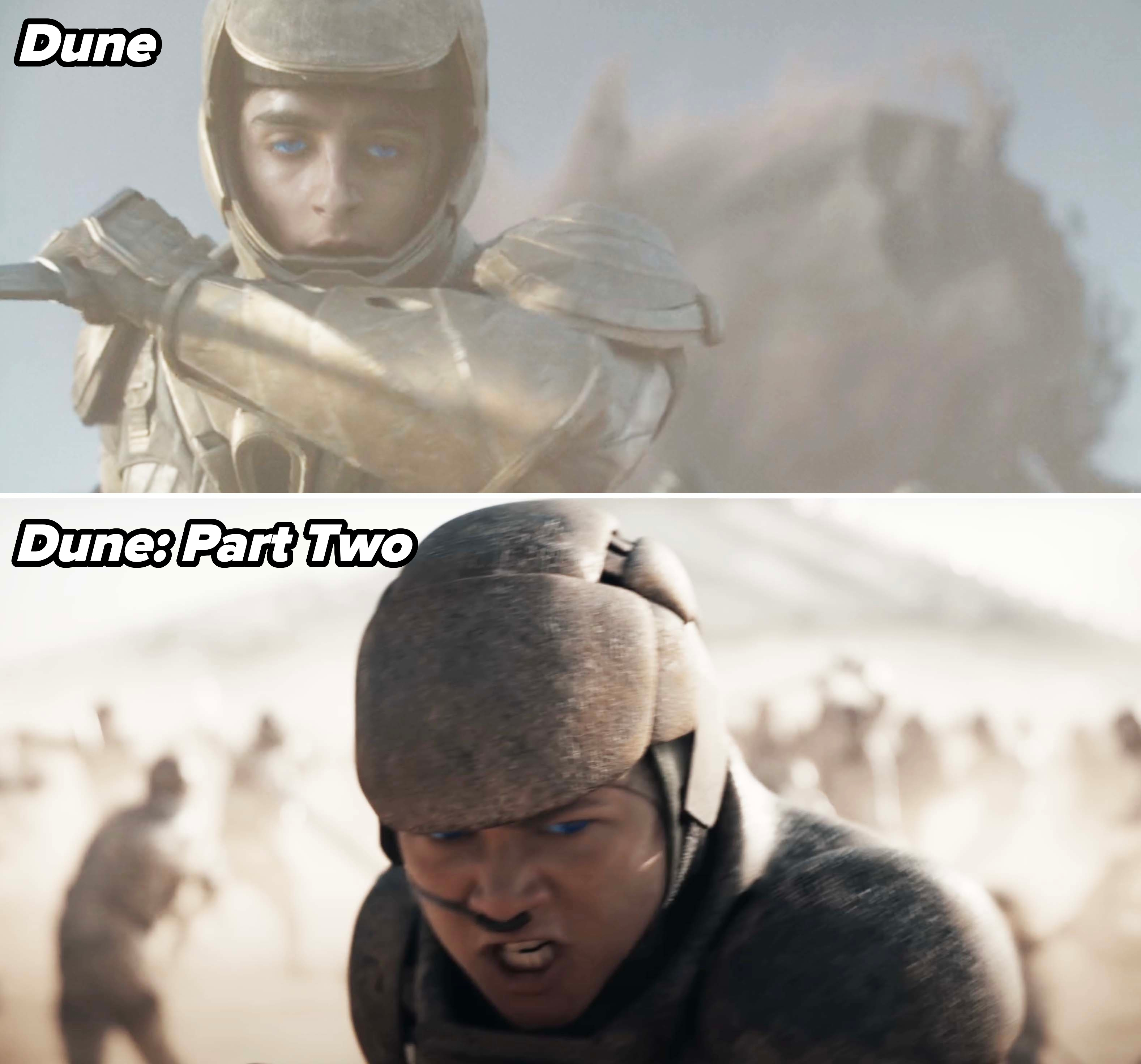
7. At the beginning of the movie, Stilgar, Chani, and the Fremen showcase to Paul and Lady Jessica how they take water from the Harkonnen soldiers they've just killed. By the end of the movie, the Fremen have abandoned their sacred beliefs to follow Muad'Dib, aka Paul, and you see them simply burning bodies instead.
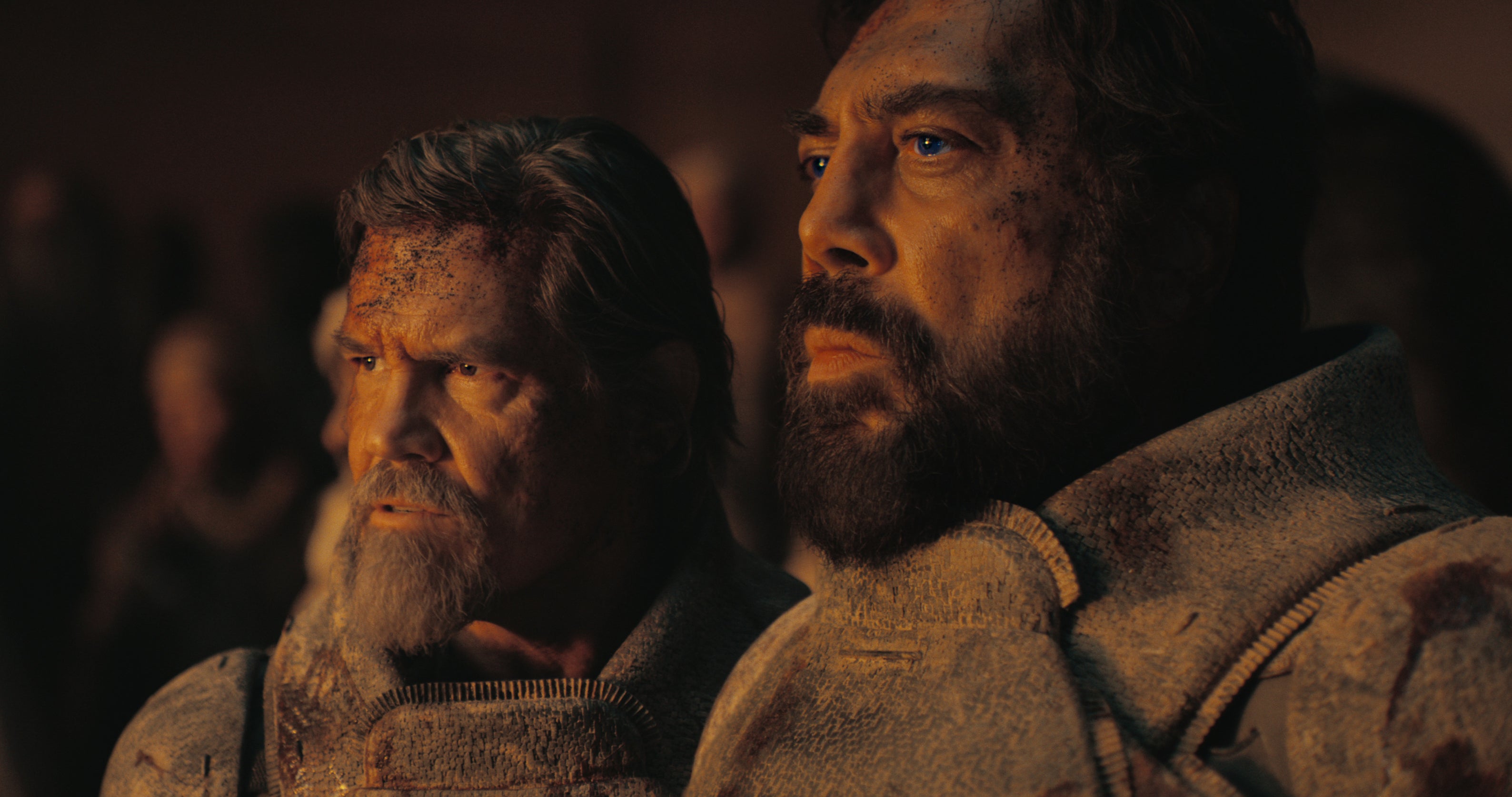
Warner Bros
8. Also, the Fedaykin burning the bodies after the massive attack at the end of the movie is a callback to the opening moments of Dune: Part Two, when we see the Harkonnen burning the bodies of the Atreides soldiers.
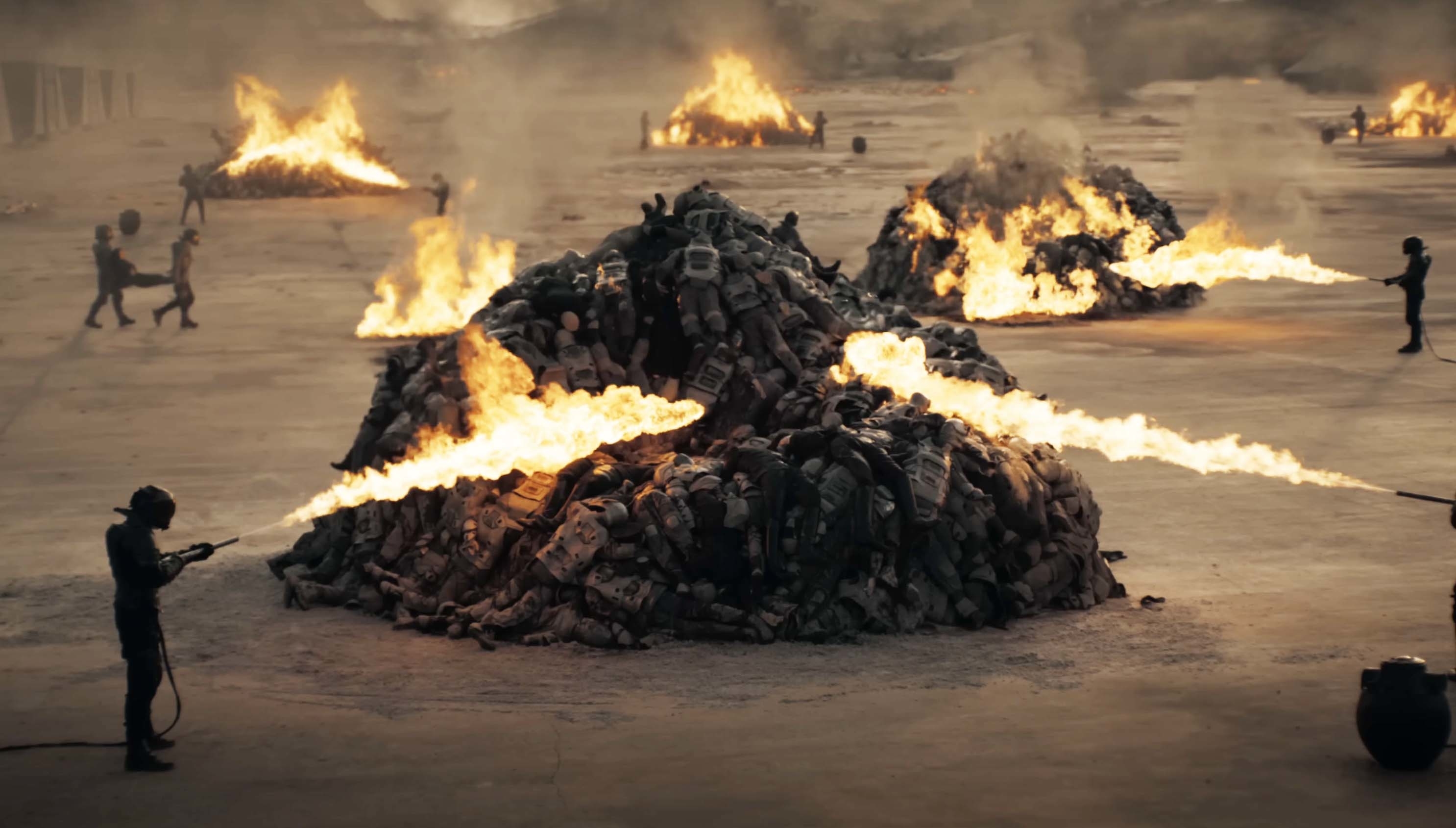
9. The Cave of Birds set, which is prominently seen when Feyd-Rautha arrives on Arrakis to see the damage he has done after bombing Sietch Tabr, was designed to "represent giant fingerprints," aka the Fremen's identity, according to production designer Patrice Vermette.
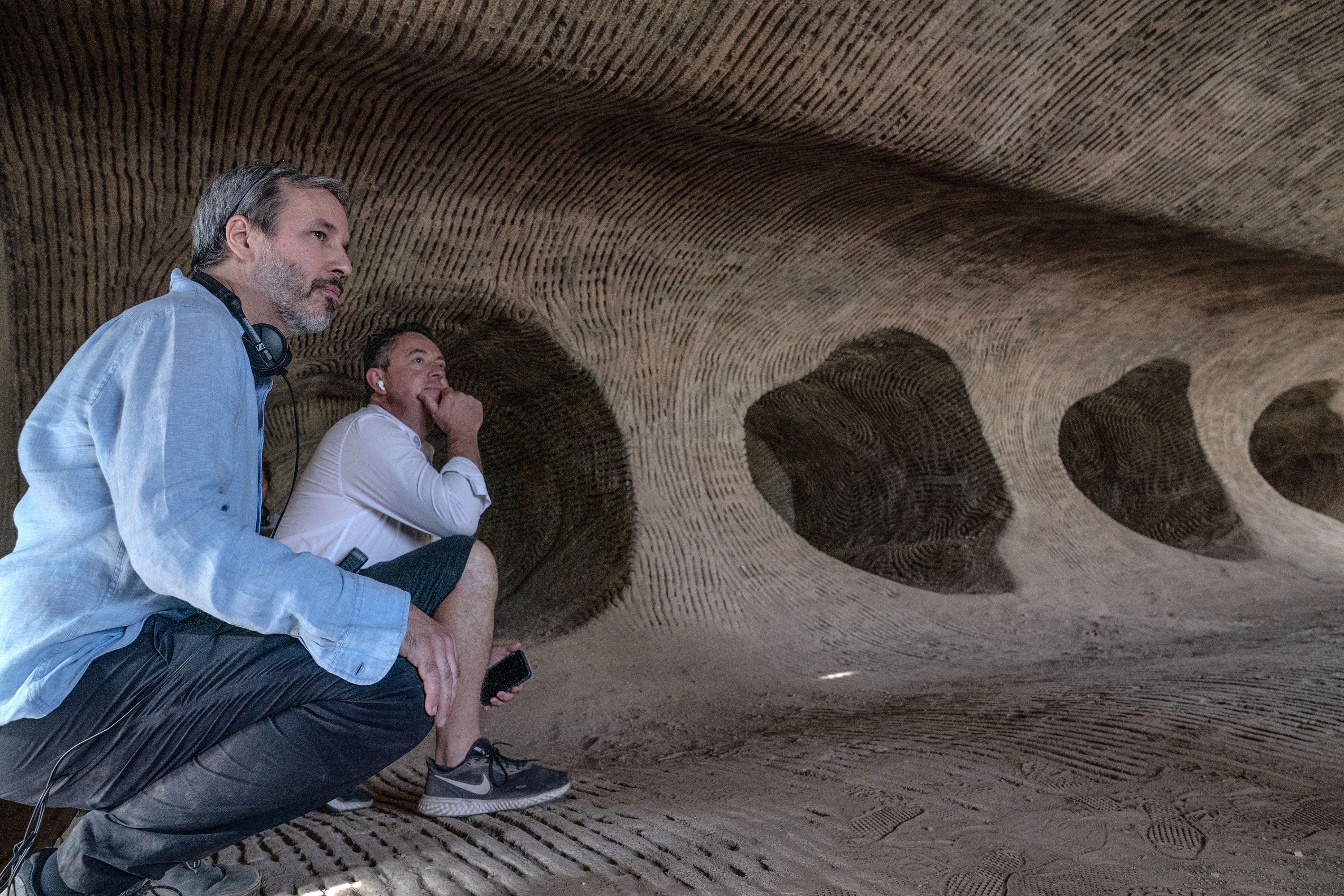
Warner Bros / Everett Collection
In the book, The Art and Soul of Dune: Part Two, Denis also elaborated on filming the bombing scene, saying that cinematographer Greig Fraser improvised shots "to capture the intensity, as a war photojournalist would do."
10. In Dune, during Paul's visions of the future, he foresees people fighting for him while holding flags that showcase the sigil for House Atreidies with a dark background. However, when the battle at the end of Dune: Part Two happens, the Fremen fighting for Paul, who are notably led by Stilgar, are holding different flags.
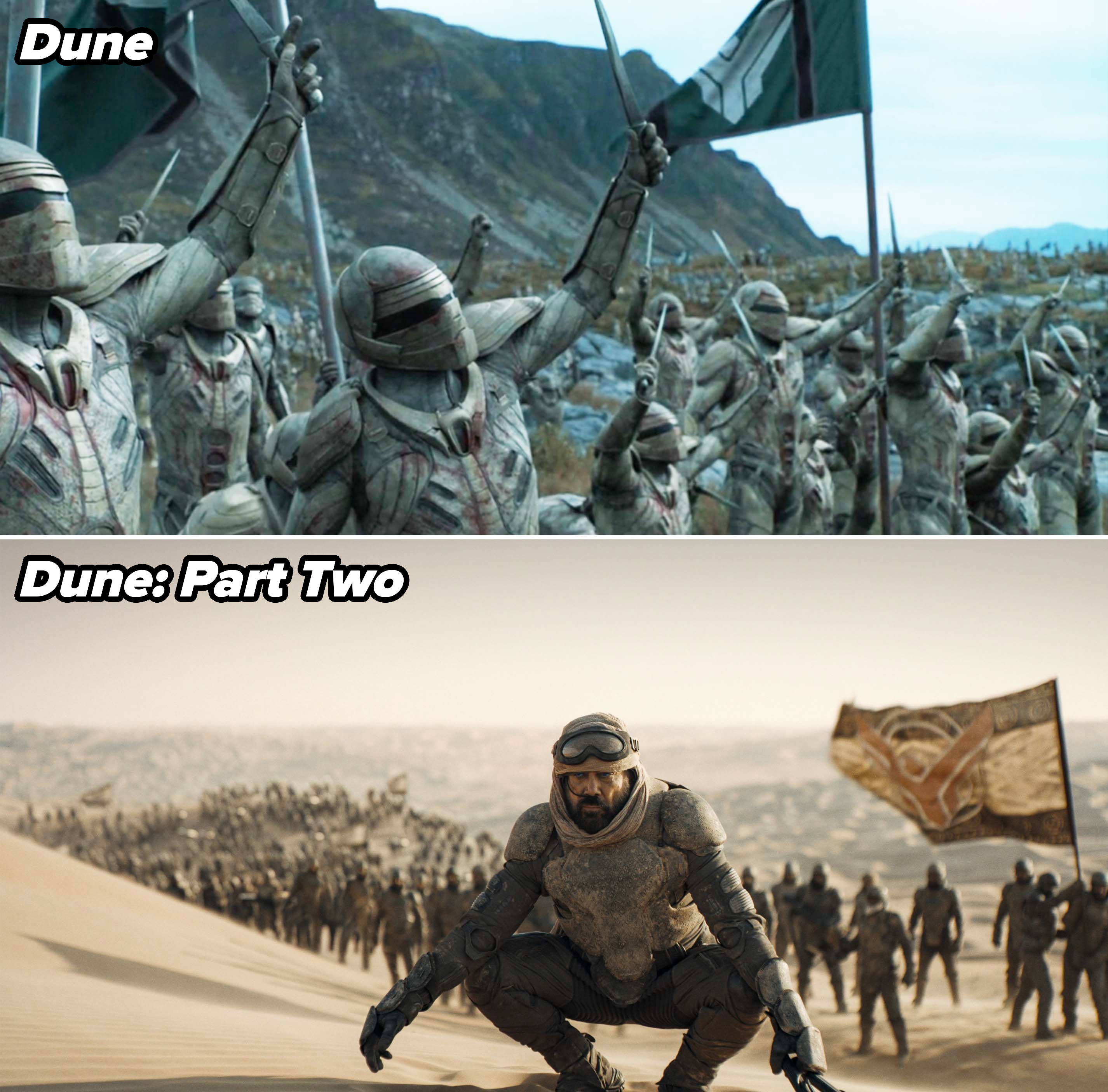
Warner Bros / Everett Collection
11. After Paul drinks the Water of Life and tells Lady Jessica that he sees "a narrow way through" all of the possible futures, there's a quick glimpse of the moment from later in the film when he stabs Feyd-Rautha during their battle.
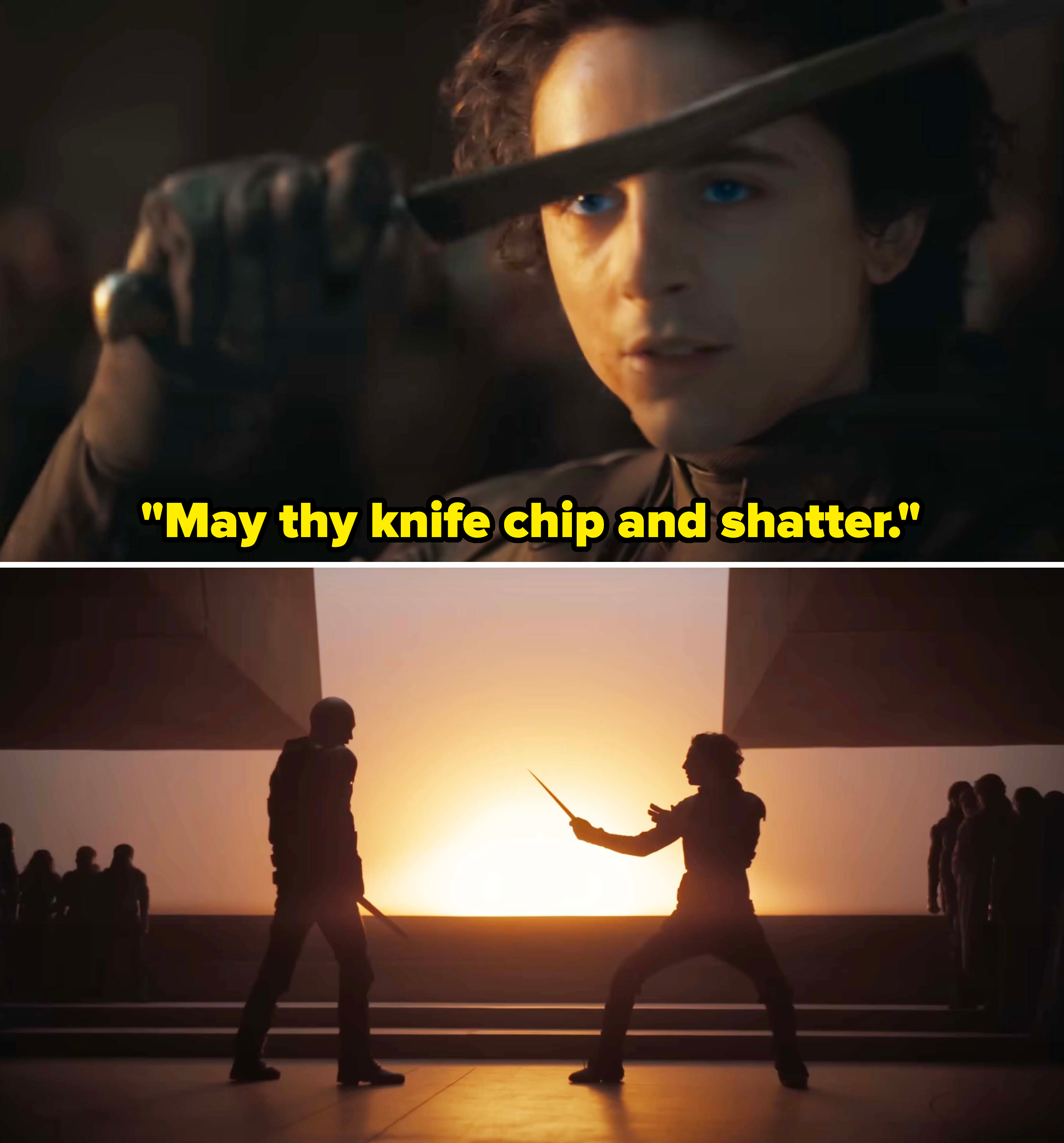
12. In the scene when the Emperor interrogates the Baron, Rabban, and Feyd-Rautha inside the Imperial Tent, you'll notice the set is designed like a pyramid, with the Emperor, Princess Irulan, and Reverend Mother Mohiam at the top, and the Harkonnens standing at the bottom of the stairs.
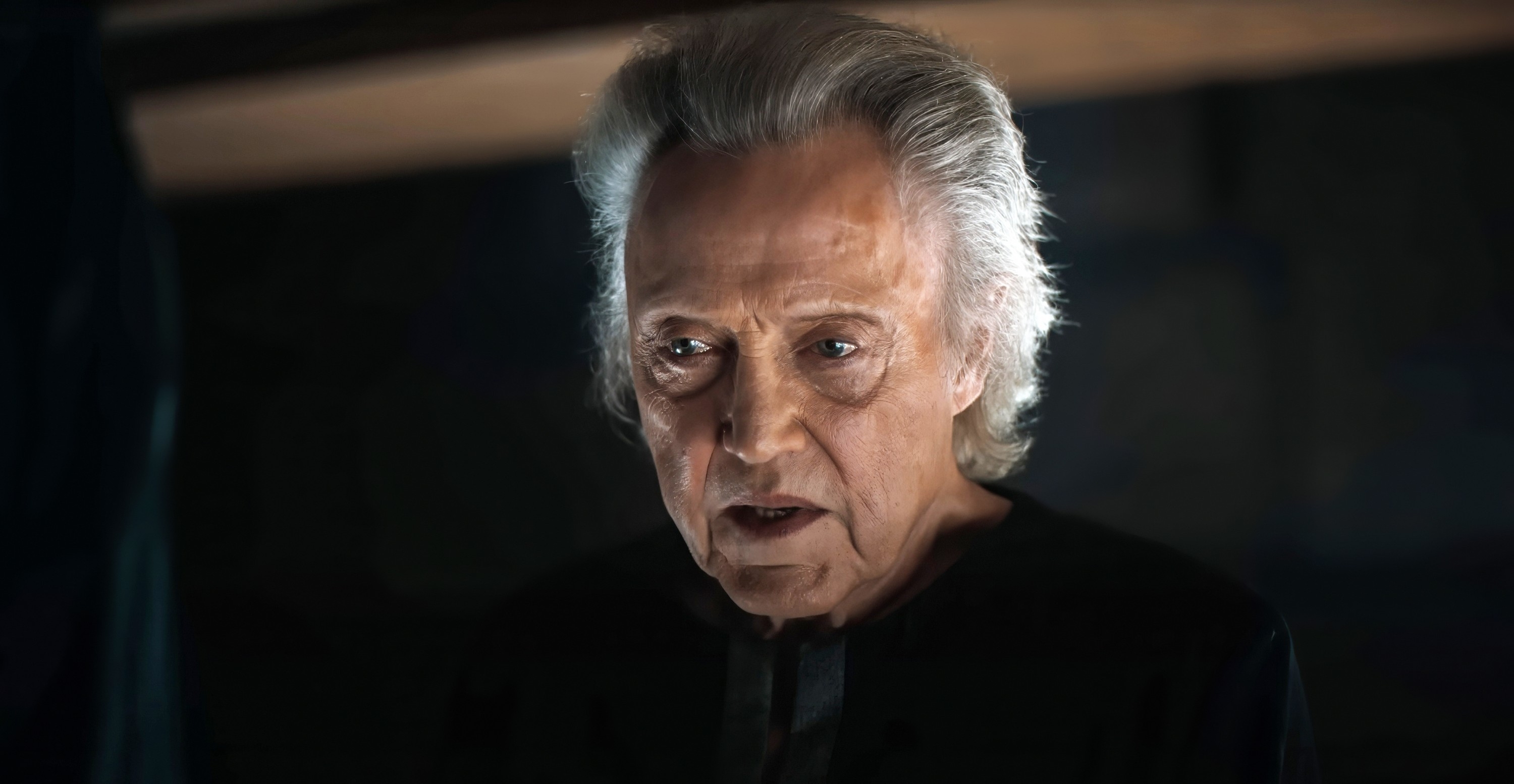
Warner Bros / Everett Collection
In the book, The Art and Soul of Dune: Part Two, producer Tanya Lapointe details how the Emperor sitting on the throne at the top is meant to symbolize how he's "at the top of the food chain."
13. Then, as the scene continues in the Imperial Tent, with Paul eventually killing the Baron and confronting the Emperor, you'll notice their positions on the pyramid-like set change. Now Paul is at the top with the Emperor, Princess Irulan, and Reverend Mother Mohiam at the bottom.
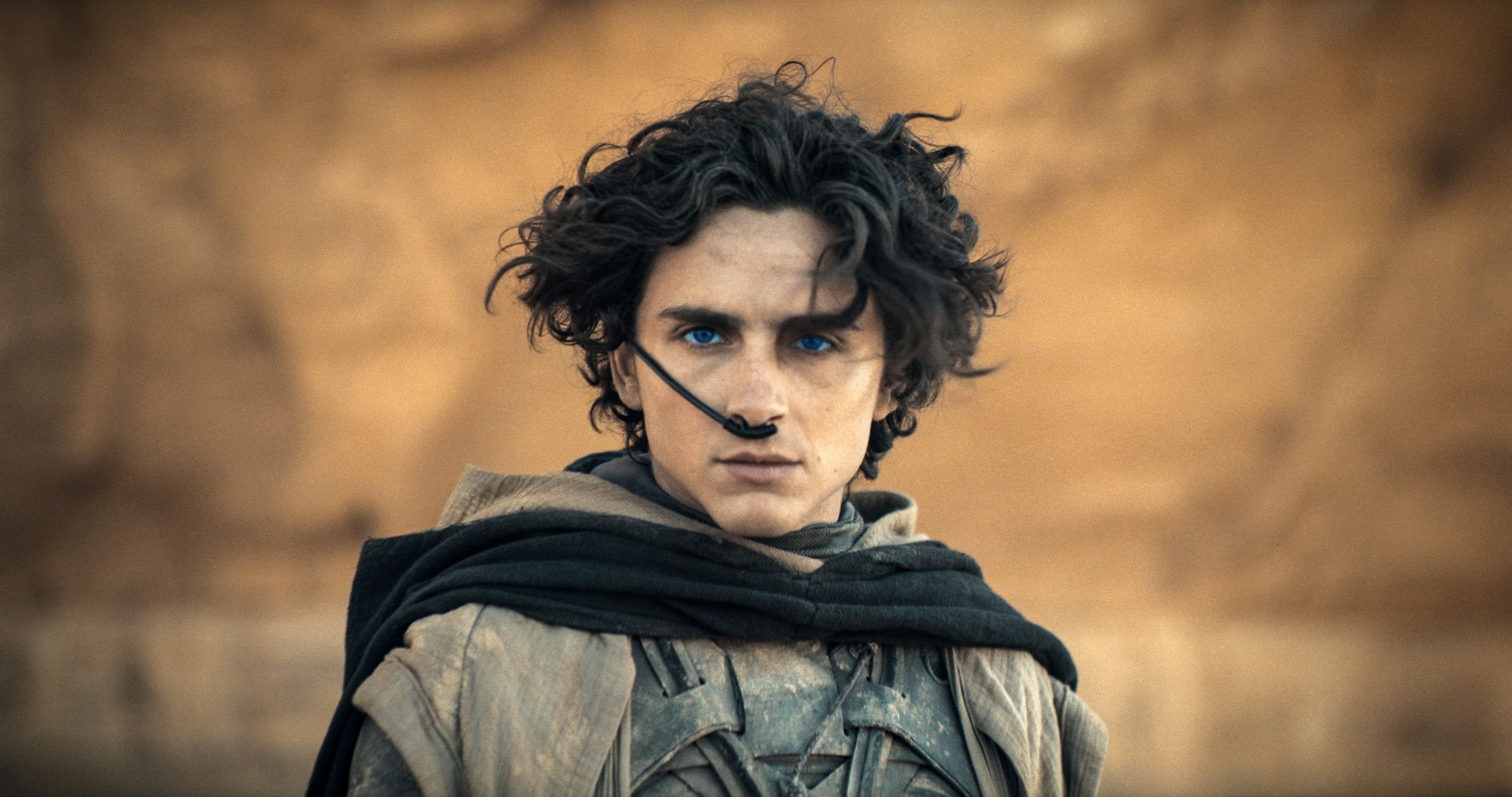
Warner Bros / Everett Collection
According to the book, The Art and Soul of Dune: Part Two, this is meant to show the "shifting political dynamics" in the movie.
14. Dune begins with Chani watching foreigners descend onto Arrakis to mine for spice, with the end of Dune: Part Two being the opposite. At the end of the second film, she watches Paul and the Fedaykin leave Arrakis to fight the Great Houses and begin the Holy War.
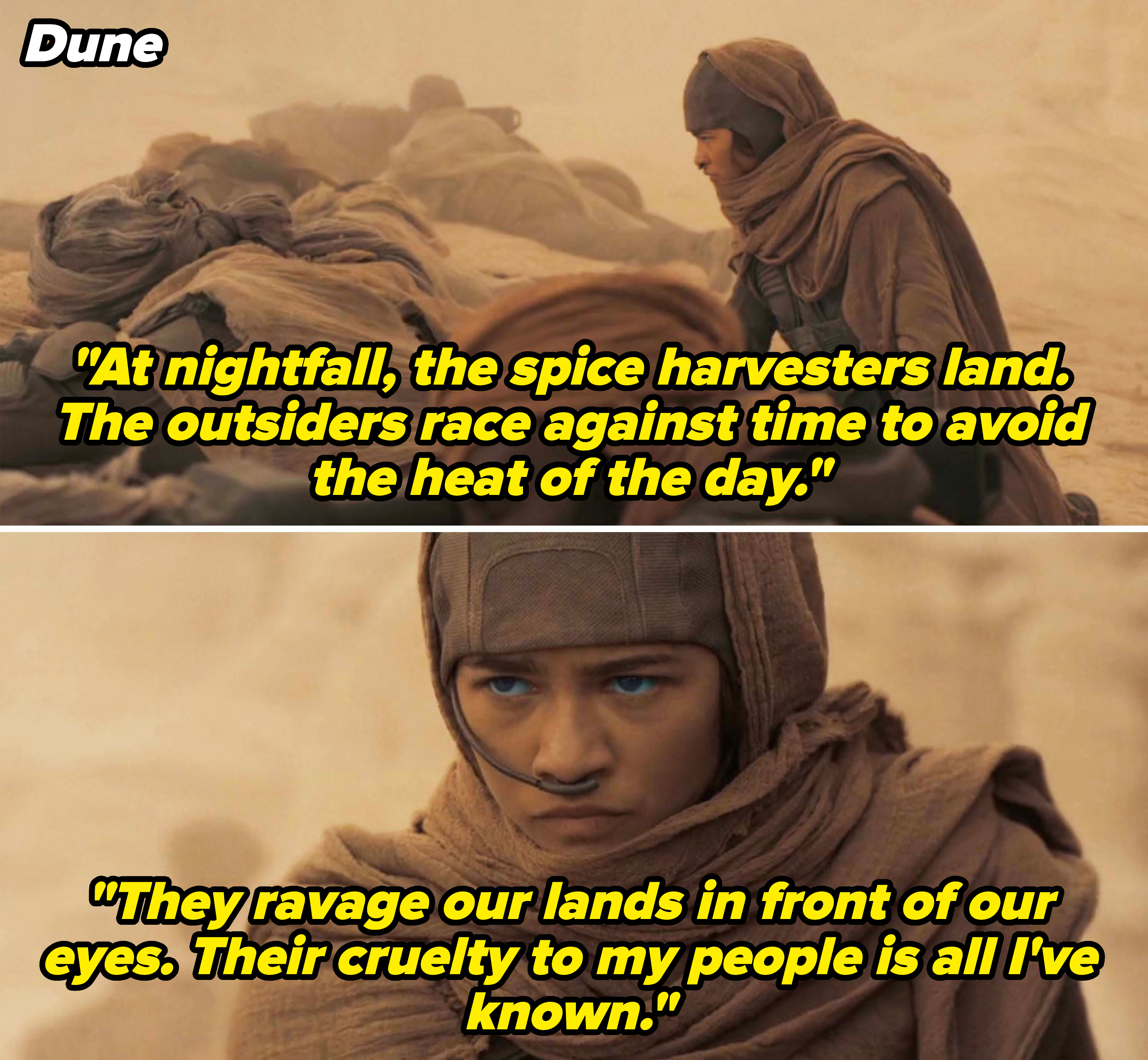
Warner Bros
15. For Princess Irulan's incredible metal headpieces, costume designer Jacqueline West said they were inspired by "how the nuns' habits framed their face." This allowed Irulan to have certain aspects of the Bene Gesserits "without giving her the shape."
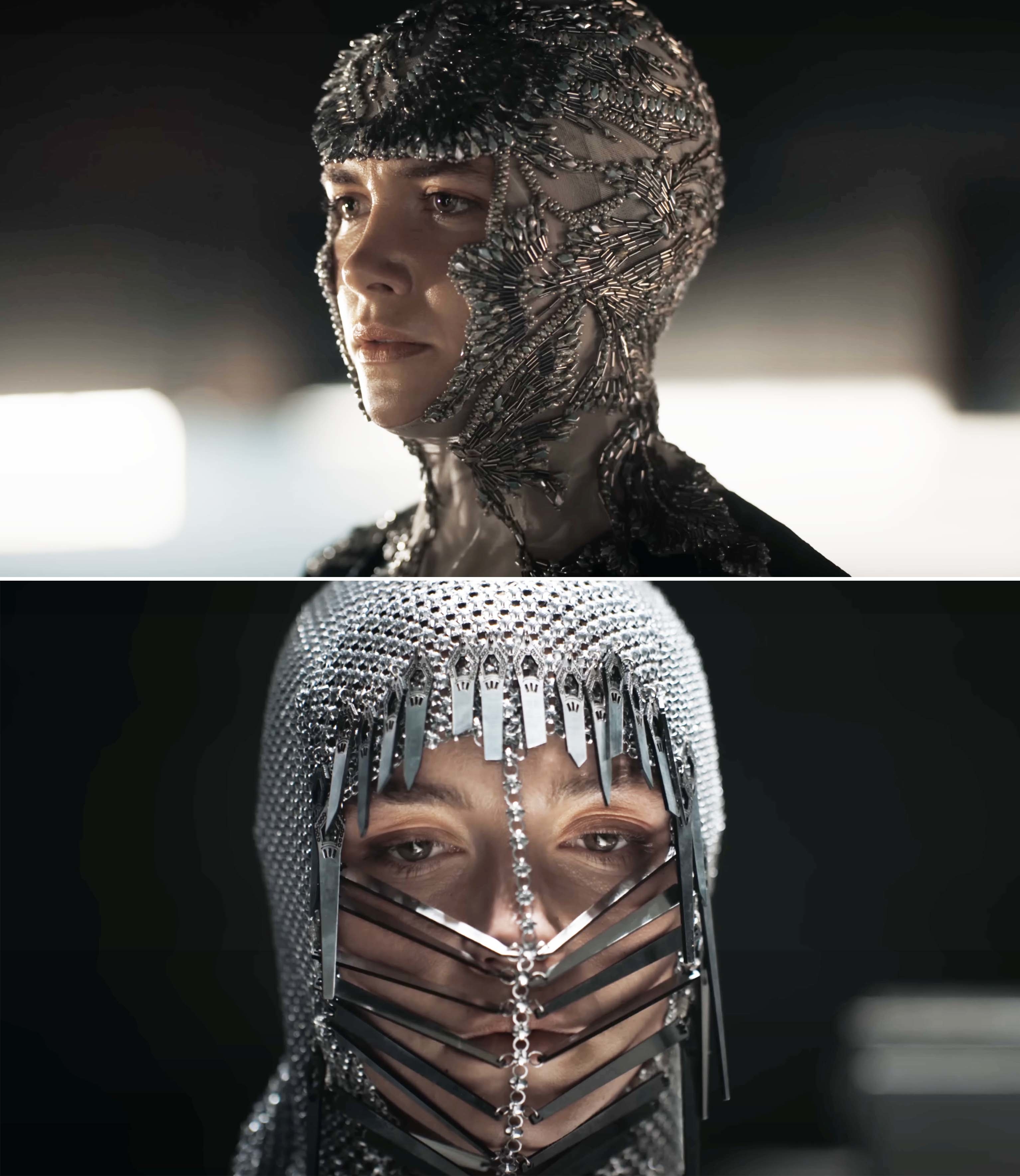
Warner Bros / Via youtu.be
Jacqueline added, "The Virgin Mary-esque mantle. I thought I could do that best with headdresses."
16. When Gurney Halleck appears for the first time in Dune: Part Two, he's playing a nine-stringed guitar while singing, which his character often does in Frank Herbert's book. In the book, he's described as both a skilled weapons master and musician.

17. The set design for Lady Fenring's bedroom was "inspired by the idea of an egg held between the legs of a spider," according to production designer Patrice Vermette.
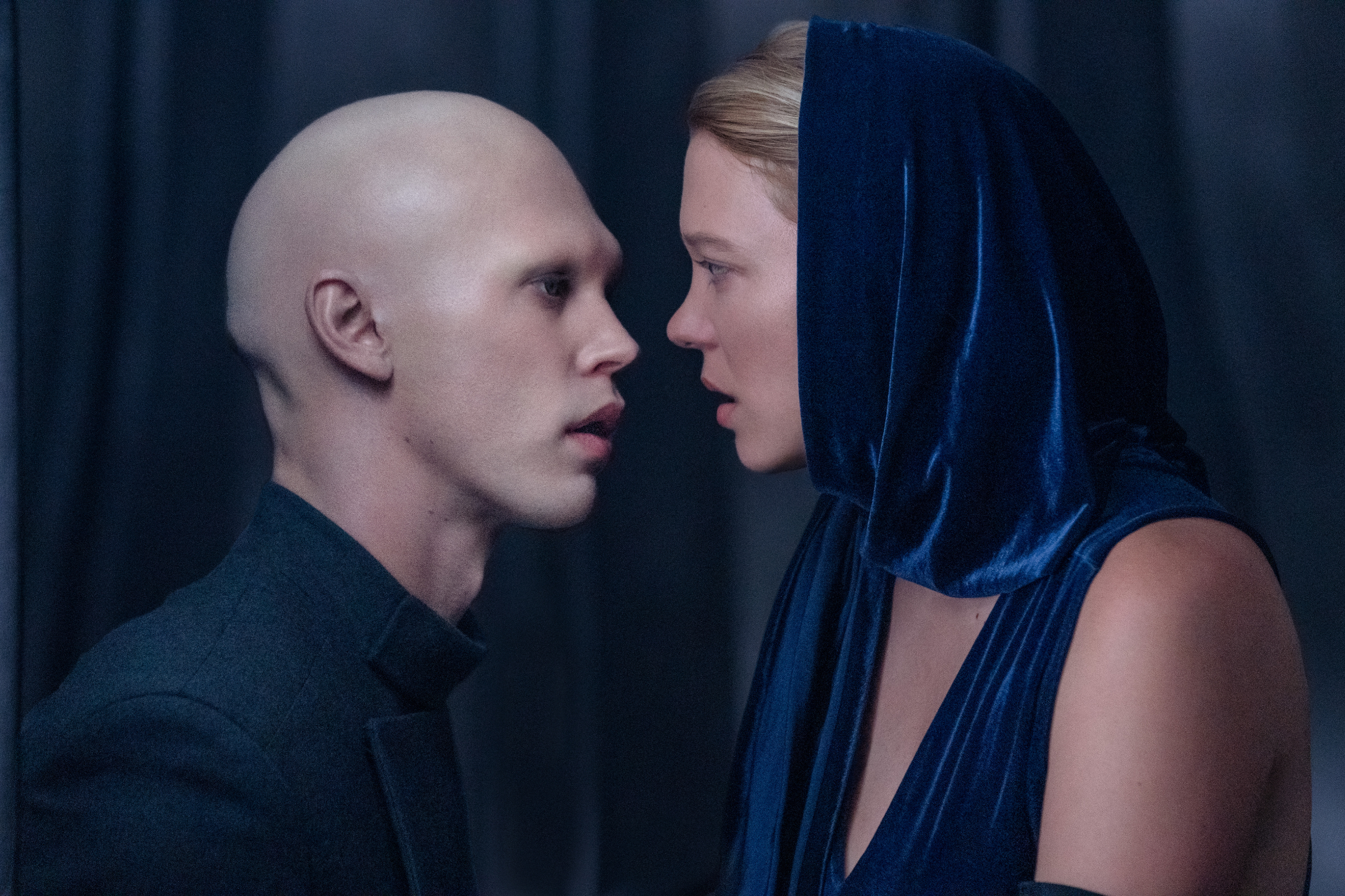
Niko Tavernise / Warner Bros
In the book, The Art and Soul of Dune: Part Two, Tanya Lapointe said that this was one of Denis' favorite sets.
18. In Dune: Part Two, the passage of time is illustrated through Princess Irulan's voiceovers as she records what is happening and states the dates. Nine months pass over the course of the movie, which is different than Frank Herbert's book, which takes place over several years.
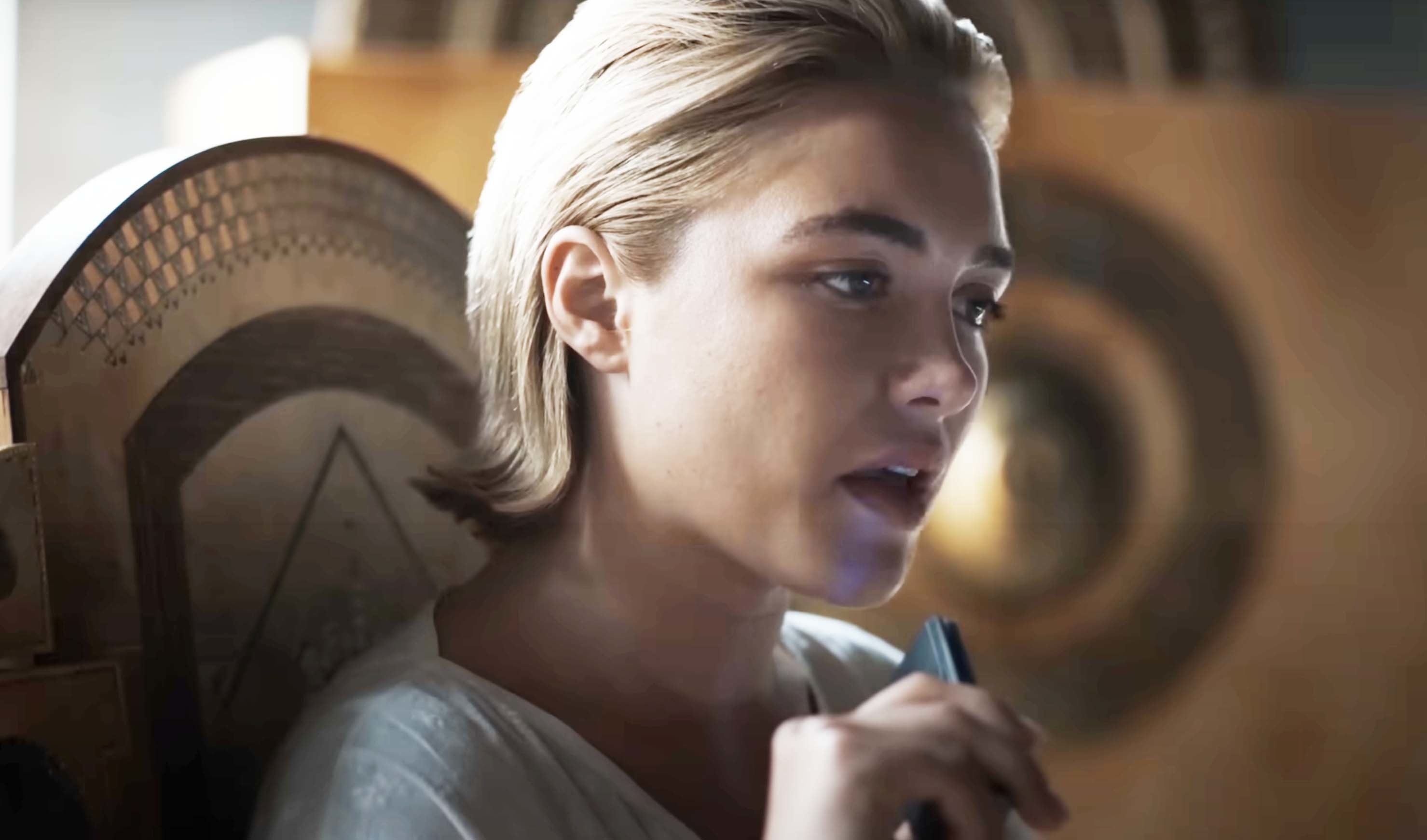
Warner Bros / Via youtu.be
This change also coincides with Lady Jessica's pregnancy. In the book, her daughter, Alia, is born during this time period, whereas Denis elected to have Jessica remain pregnant and have conversations with her unborn child.
19. In Dune, there's a scene when the Sardaukar army silently drops in for an ambush. A similar moment happens at the beginning of Dune: Part Two, when the Harkonnen soldiers float upward as Paul, Jessica, and the Fremen avoid and hunt them.
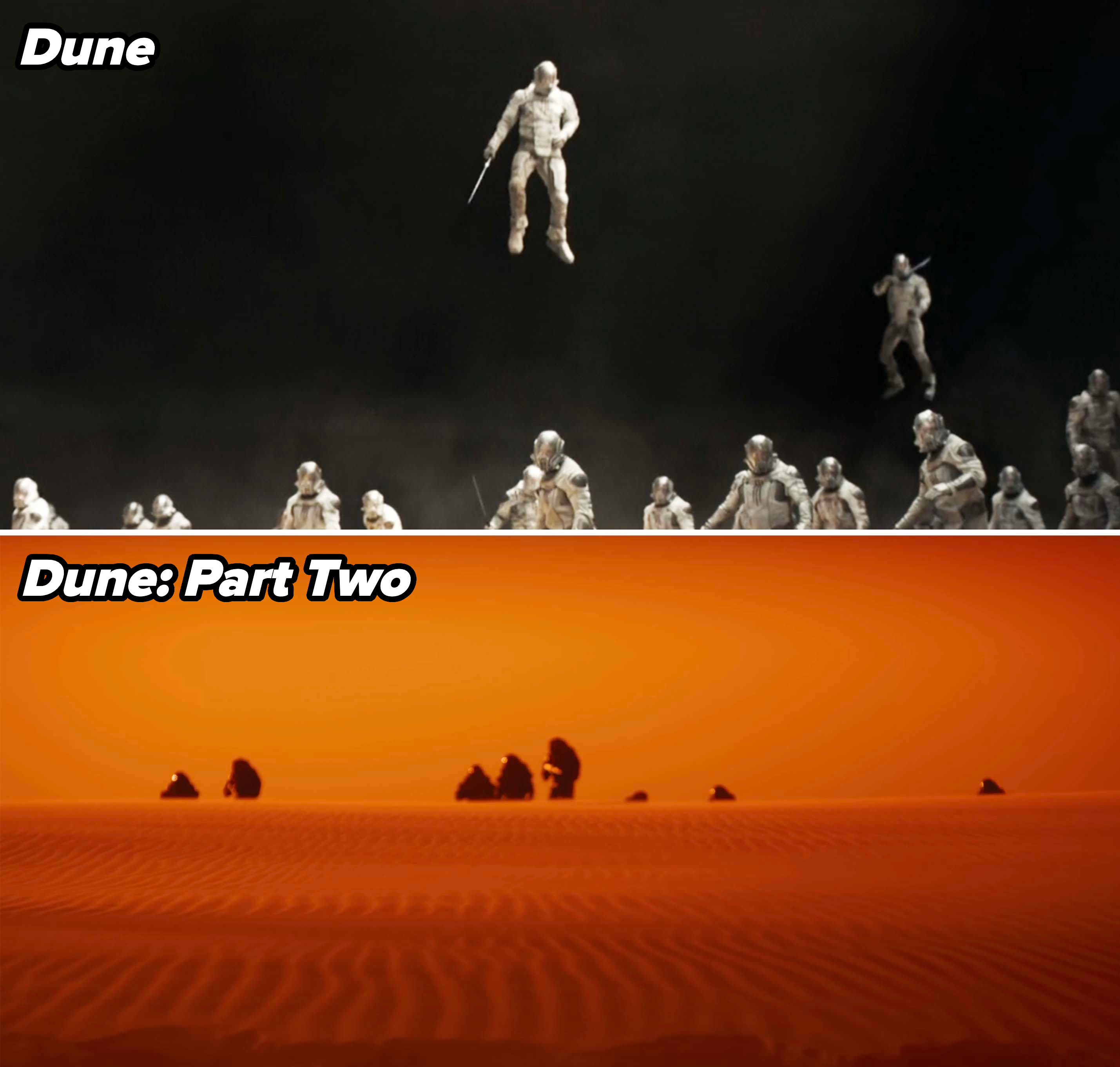
20. When designing the Sardaukar army's swords, prop master Doug Harlocker explained in The Art and Soul of Dune: Part Two that they are made to reference "a version of Excalibur, or Templar knights' lethal broadsword."
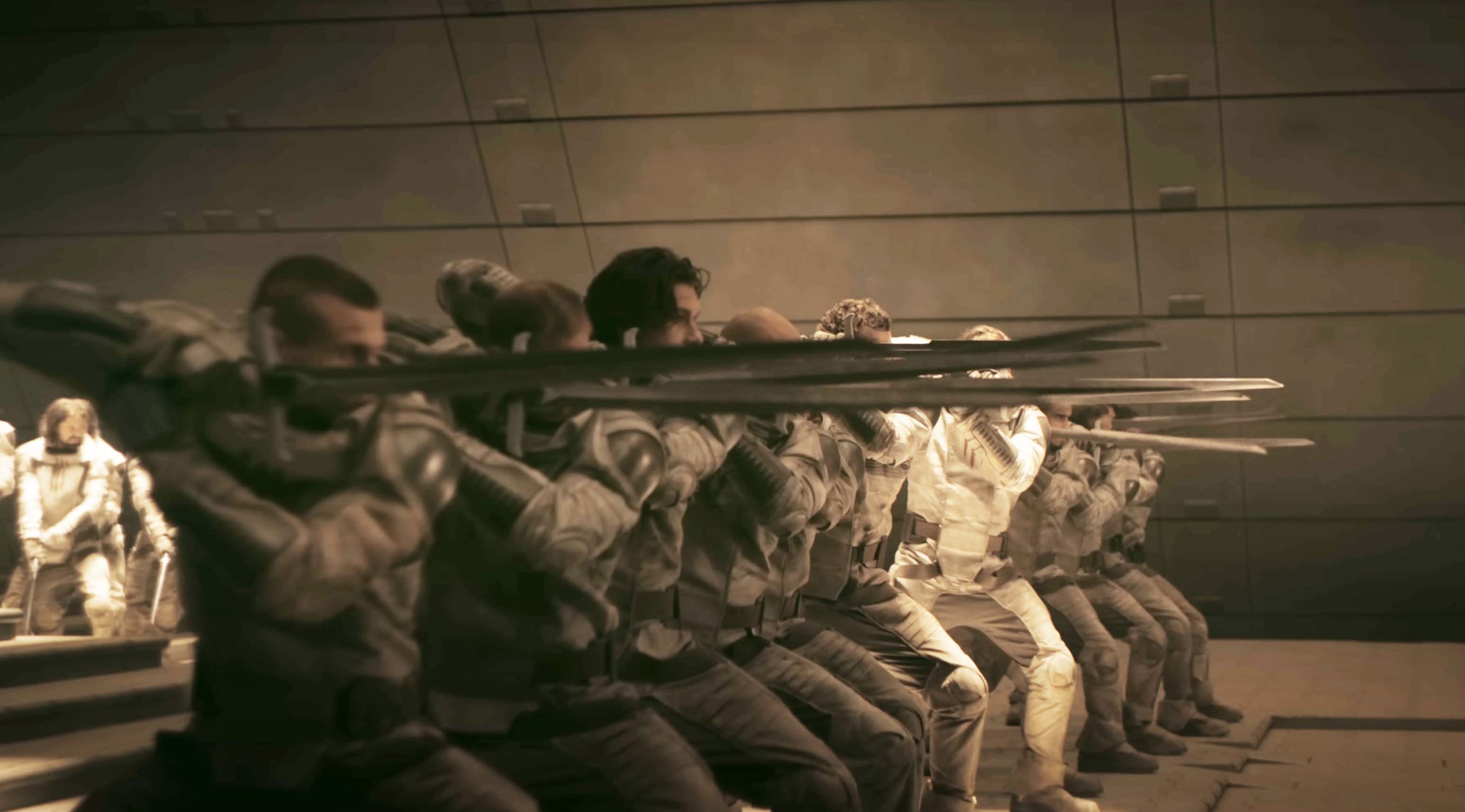
21. And finally, in Dune, we see Liet-Kynes preparing to ride a sandworm by standing on top of a sand dune on Arrakis. In Dune: Part Two, the movie ends with Chani doing the same thing, with the scenes filmed almost identically.
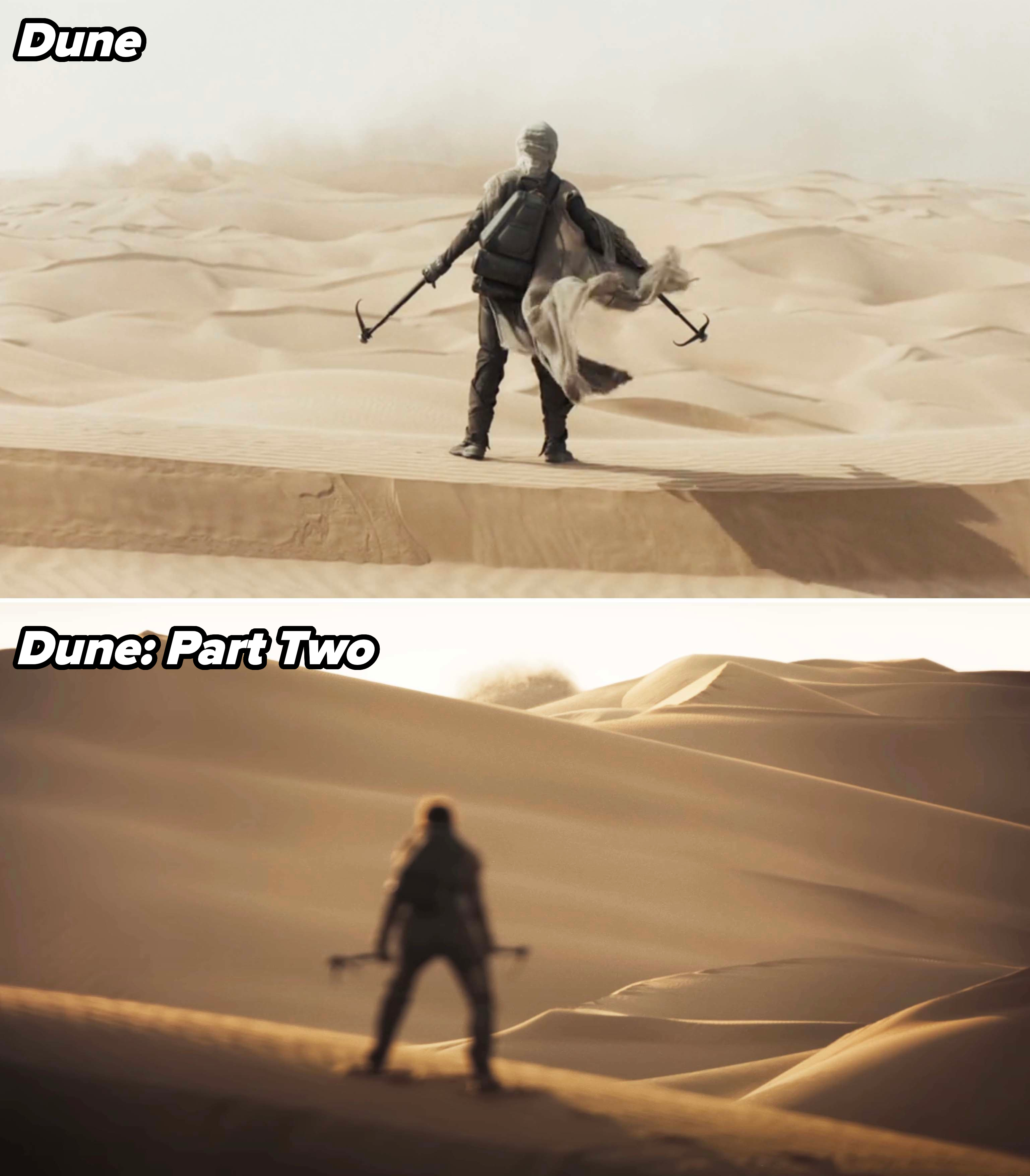
Warner Bros / Via youtu.be
In the book, Liet-Kynes, who is a man in the original novels, is Chani's father, but in the movies, Chani's relation to Liet-Kynes has not been specified.













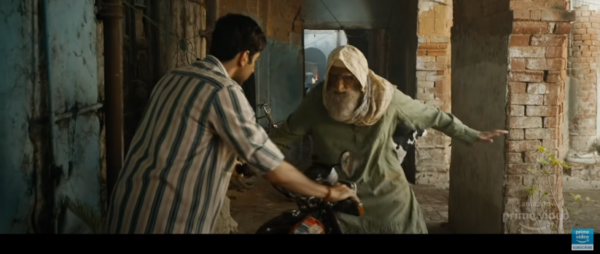
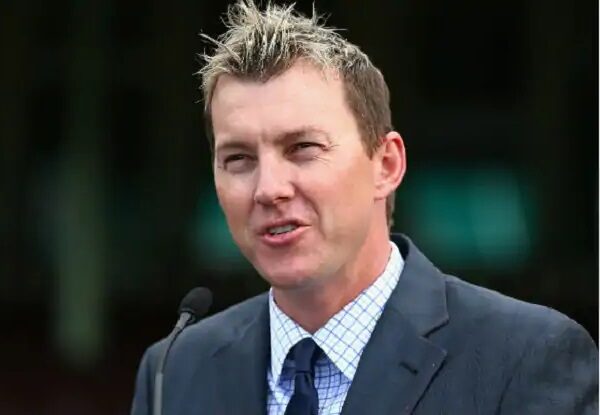
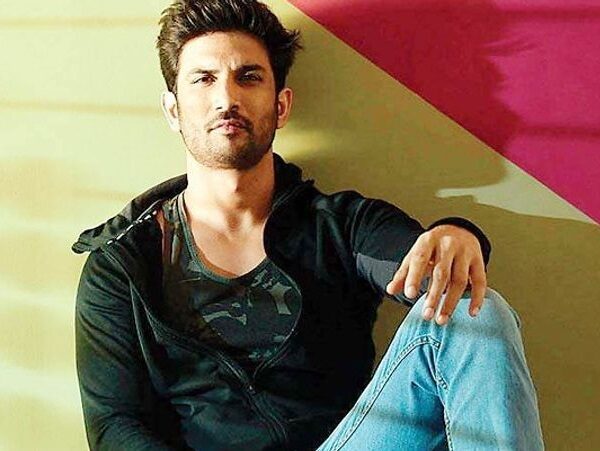
 Bengali (Bangladesh) ·
Bengali (Bangladesh) ·  English (United States) ·
English (United States) ·